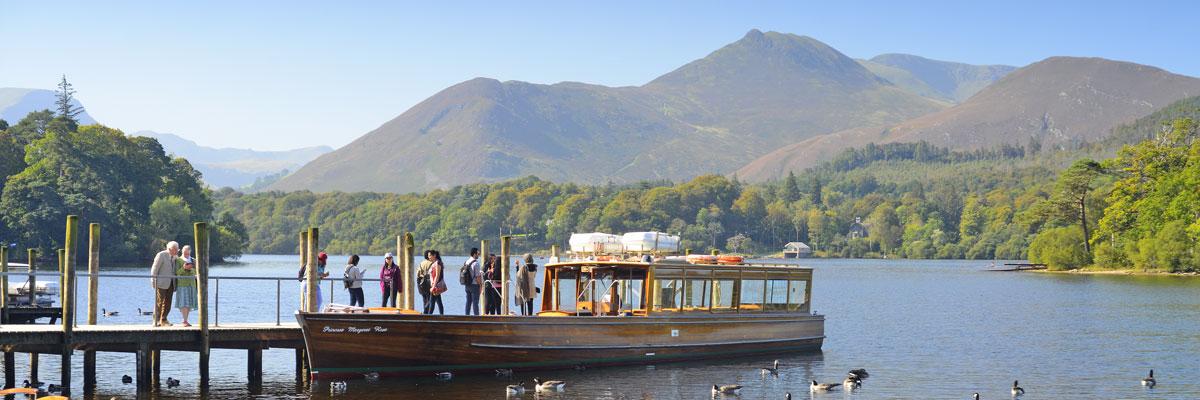The market town of Keswick is the hub of the north Lakes; like Ambleside in the south Lakes, it not only stands on the main route through the Lake District (the A591) but also on a junction of valleys. Keswick was granted its market charter by Edward I in 1276, with the market still thriving today. In the centre of Market Square stands one of Lakeland’s iconic buildings, Moot Hall. This was the market cross, with the ground floor originally being open for the stalls, but the building has also served as a jail and courthouse. Today it is home to the tourist information centre.
Keswick’s early history centred on agriculture, but in the Elizabethan period it became a boom-town for the mining industry. A wide range of minerals were found in the hills around Keswick, including lead, silver and gold, but it was copper that was mined most successfully; one writer at this time said there was ‘sufficient copper… for all England’ here.
The copper boom lasted for almost a century, but the mineral now most famously connected with Keswick is graphite. This relatively rare substance was discovered in Borrowdale, and was found to have many uses, but is now best known for being the ‘lead’ in pencils. Pencils were first made in Keswick as early as the 1790s; this was originally a cottage industry, but with such a good source nearby it was perhaps inevitable that production would expand. At the height of production there were several factories in Keswick, but by the end of the 20th Century just one remained, the Derwent Pencil factory. In 2007 Derwent moved their production 25 miles to west Cumbria, but the industry is still celebrated in Keswick at the Derwent Pencil Museum at the north end of the town.
Tourism in the Lake District started around 1750, and for those first visitors it was Keswick and Derwent Water rather than Windermere that was the main attraction. For anyone with the time and money to travel, there was suddenly an interest in seeing wilder scenery, and it was the landscape around Derwent Water that best fitted their ideas of Picturesque views. By the end of the 18th Century, tourism was in full swing. Perhaps the most famous and spectacular event staged for the new visitors was the annual Regatta. This took place on the lake near Crow Park, and included mock sea battles; the canon-fire echoing from the surrounding mountains was a particular delight for the spectators.
Derwent Water is a short walk south of Keswick, with wonderful views of the lake from Crow Park and Friar’s Crag. From here it is possible to walk around the lake; the full circuit is about 10 miles, and takes 4-5 hours. However, the boat service on the lake, operated by the Keswick Launch Company, allows walkers to pick and choose parts of the route, with the best sections being around the southern and western shores; the section from Lodore to Hawse End is about 3 miles.
Of the many hills overlooking the lake, it is Cat Bells which has the most striking outline, particularly when seen from Crow Park. Although less than half the height of Lakeland’s highest mountains, the ascent of Cat Bells from Hawse End should not be underestimated, as the path is steeper and narrower than it first appears. However, the view from the summit is worth the effort, with great views of Derwent Water, Bassenthwaite Lake and Skiddaw, and of the Newlands Valley to the west.

